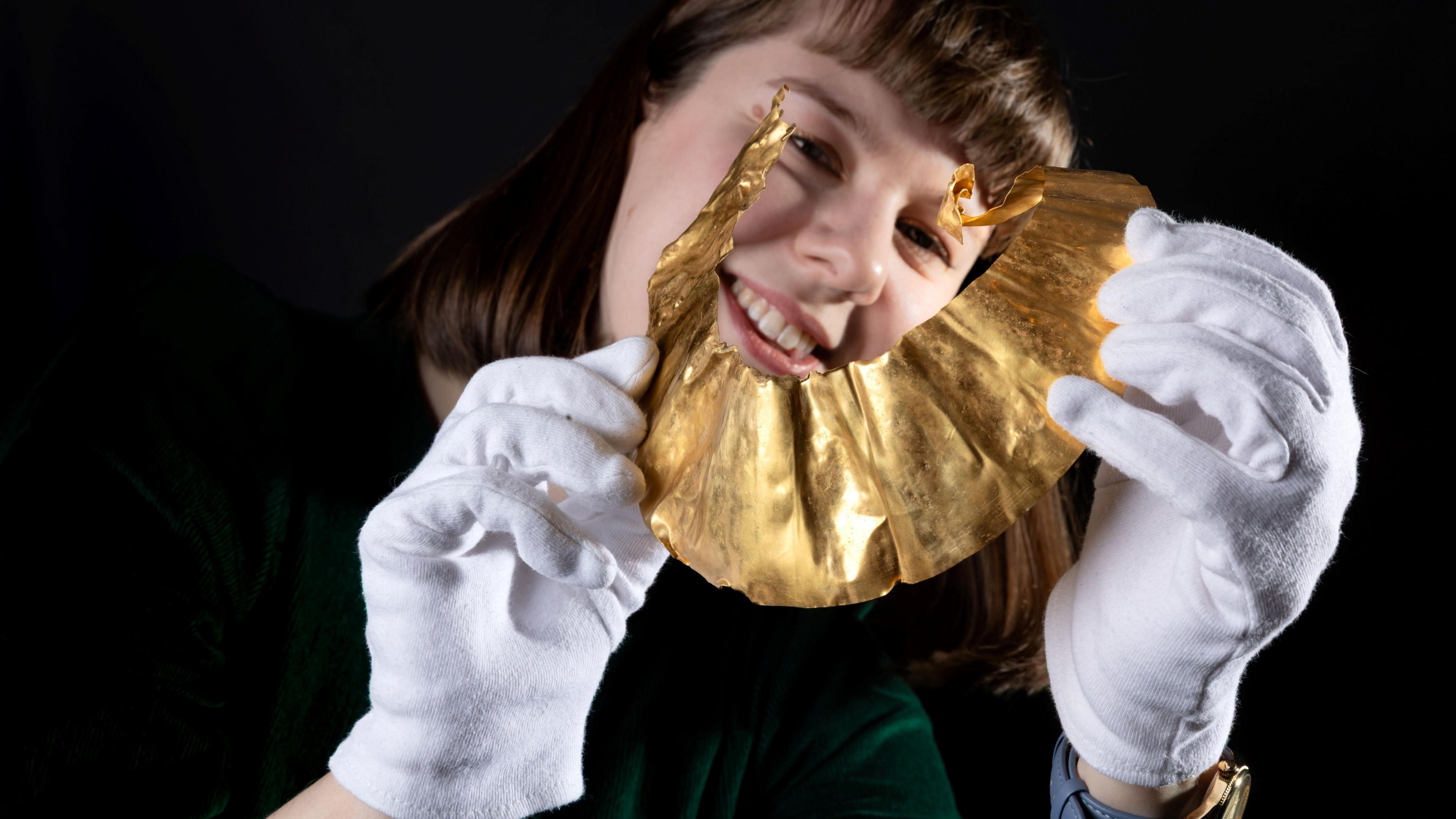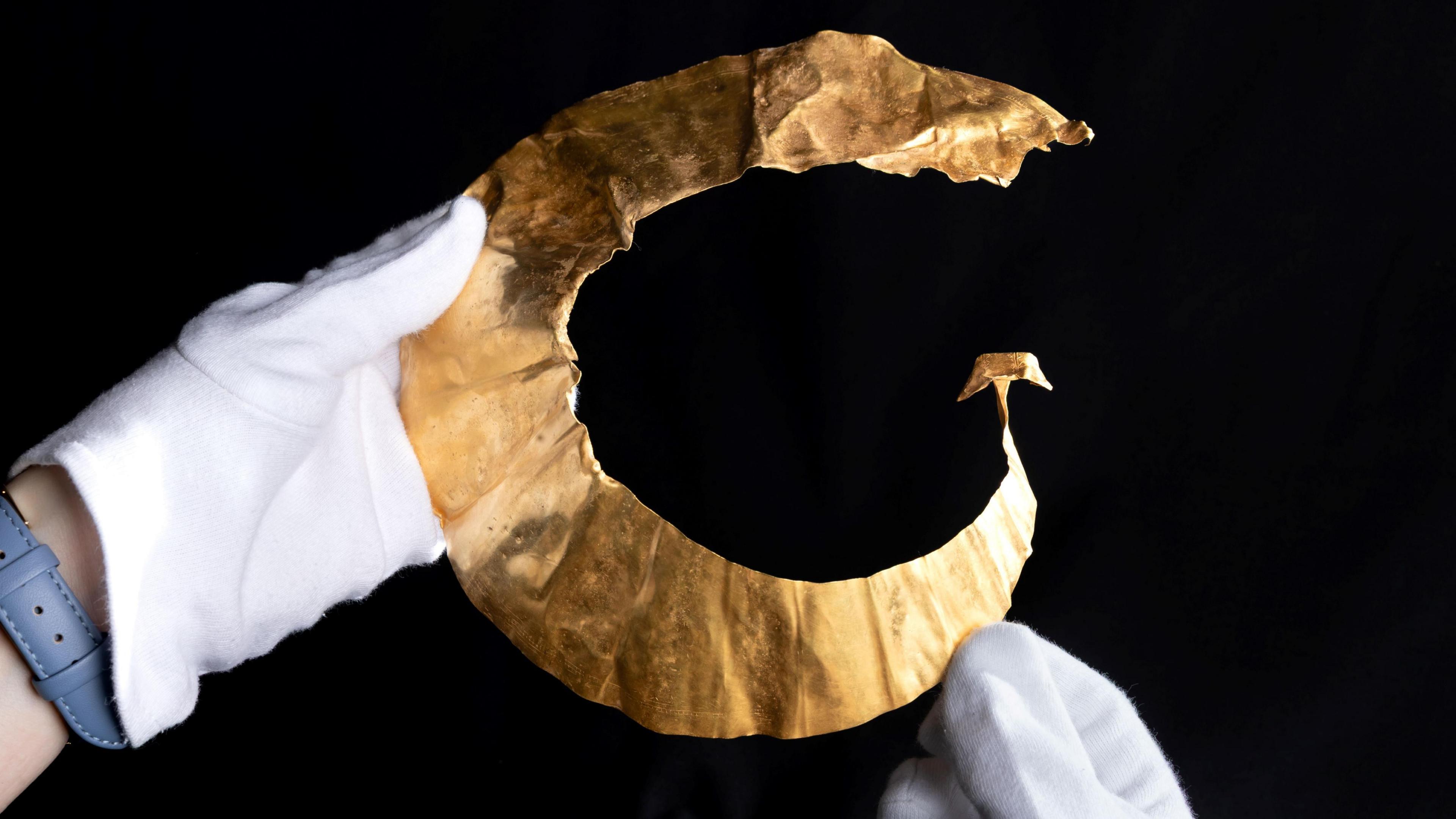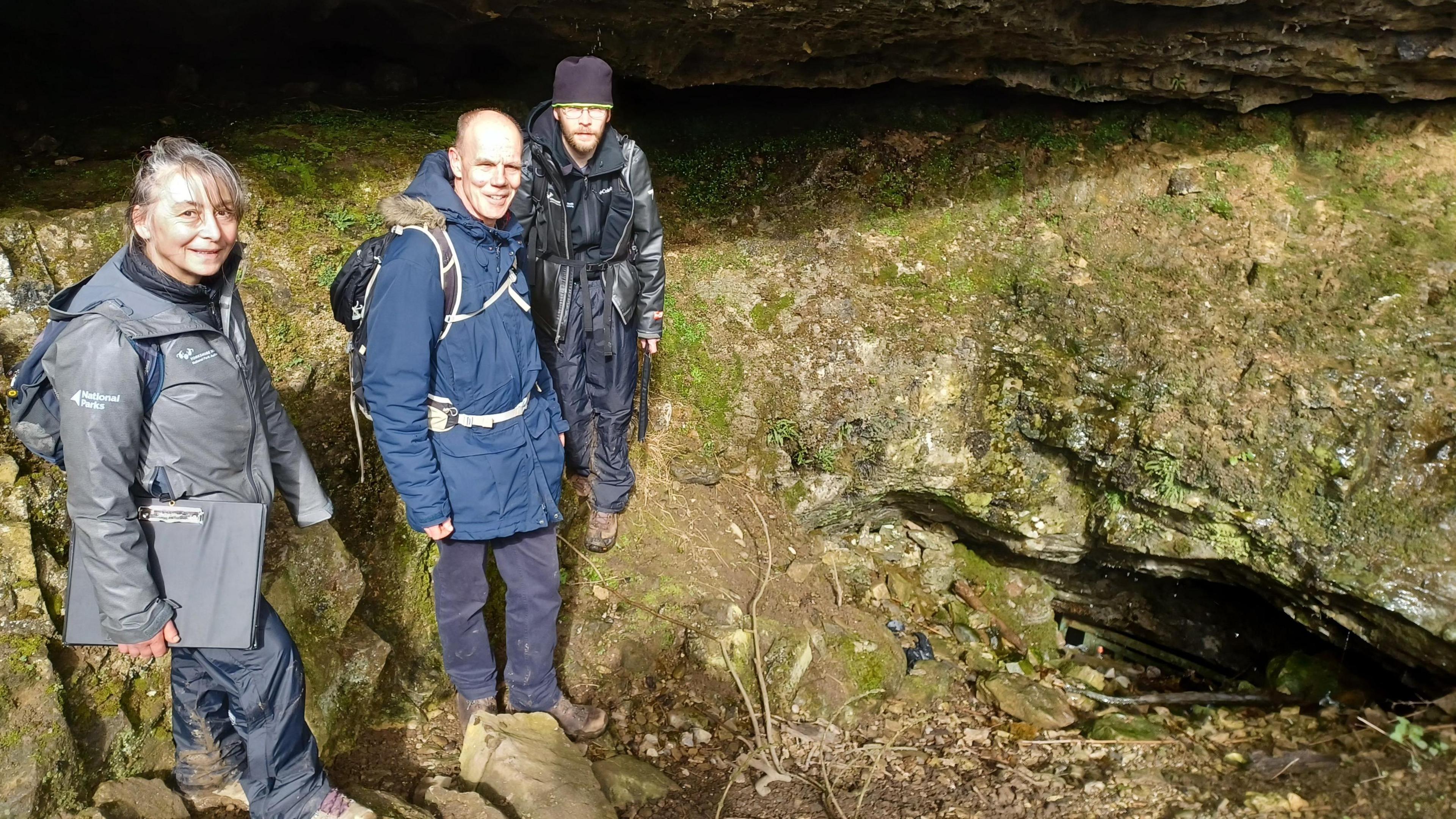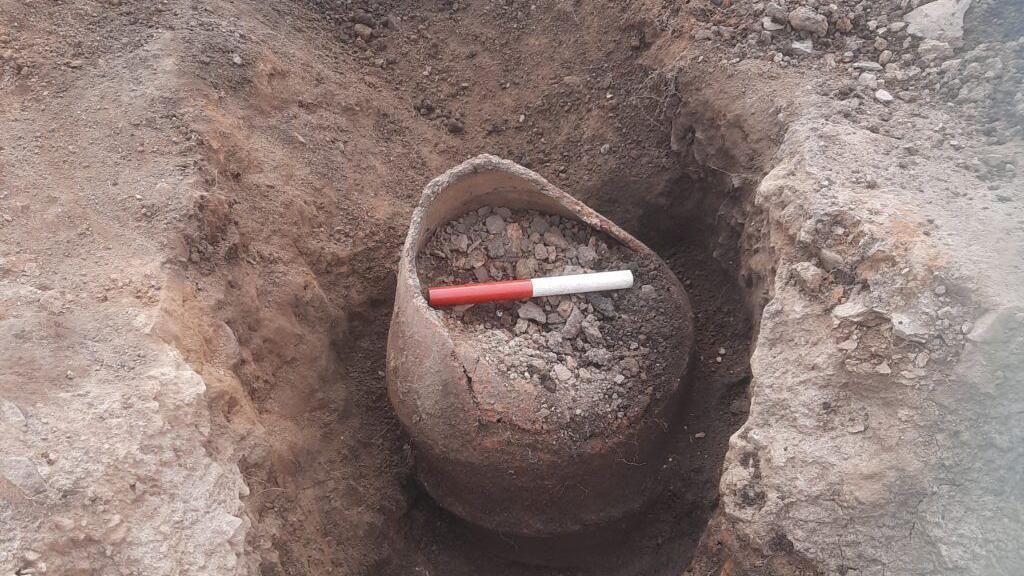Detectorist's Bronze Age find goes on show

Craven Museum curator Charlotte Craig with the gold lunula which has gone on permanent display in Skipton
- Published
A nationally significant Bronze Age object found by a metal detectorist in a stream has gone on public display.
The large, crescent-shaped gold necklace or collar, known as a lunula, was said by experts to offer an insight into the lives of people who lived in the country over 4,000 years ago.
It was found near Grassington in the Yorkshire Dales in 2023, but has been acquired by Craven Museum where it has become the centrepiece of a Bronze Age collection.
Charlotte Craig, curator at the Skipton Town Hall-based Craven Museum, said: "This is only the second complete, or almost complete, lunula found in Yorkshire and is believed to be the only one on permanent display in the north of England.
Lunulae are some of the earliest and most impressive examples of goldworkers' craft, dating to about 2000 BC.
While the Grassington area is well known for its Iron Age and Bronze Age sites, experts have said that nothing similar had been found before which so clearly showed the wealth and status of those communities.

The gold lunula was found by a metal detectorist in a stream near Grassington in 2023
North Yorkshire councillor Simon Myers said: "The importance of this find cannot be overstated, and to have it on permanent display in the county where it was found is a real coup."
Since the metal detectorist's discovery two years ago, the object has been researched by the British Museum in London before being returned home to North Yorkshire.
Ms Craig said the techniques to make gold lunulae originally came from Ireland, meaning that finding such an item in North Yorkshire confirmed that our ancestors must have had connections across the Irish Sea to exchange knowledge and materials.
As there were no known sources of gold in North Yorkshire, it was thought to have come from Cornwall, Wales or Ireland, she explained.
"When the gold lunula first arrived at the museum, I was struck by how beautiful it was and how the people who made and used it must have been so sophisticated and well-connected," Ms Craig said.
"I felt such a connection to those people who lived here more than 4,000 years ago and how they must have felt about an item that was so important to them."
Get in touch
Tell us which stories we should cover in Yorkshire
Listen to highlights from North Yorkshire on BBC Sounds, catch up with the latest episode of Look North.
Related topics
More stories like this
- Published5 August

- Published30 August
